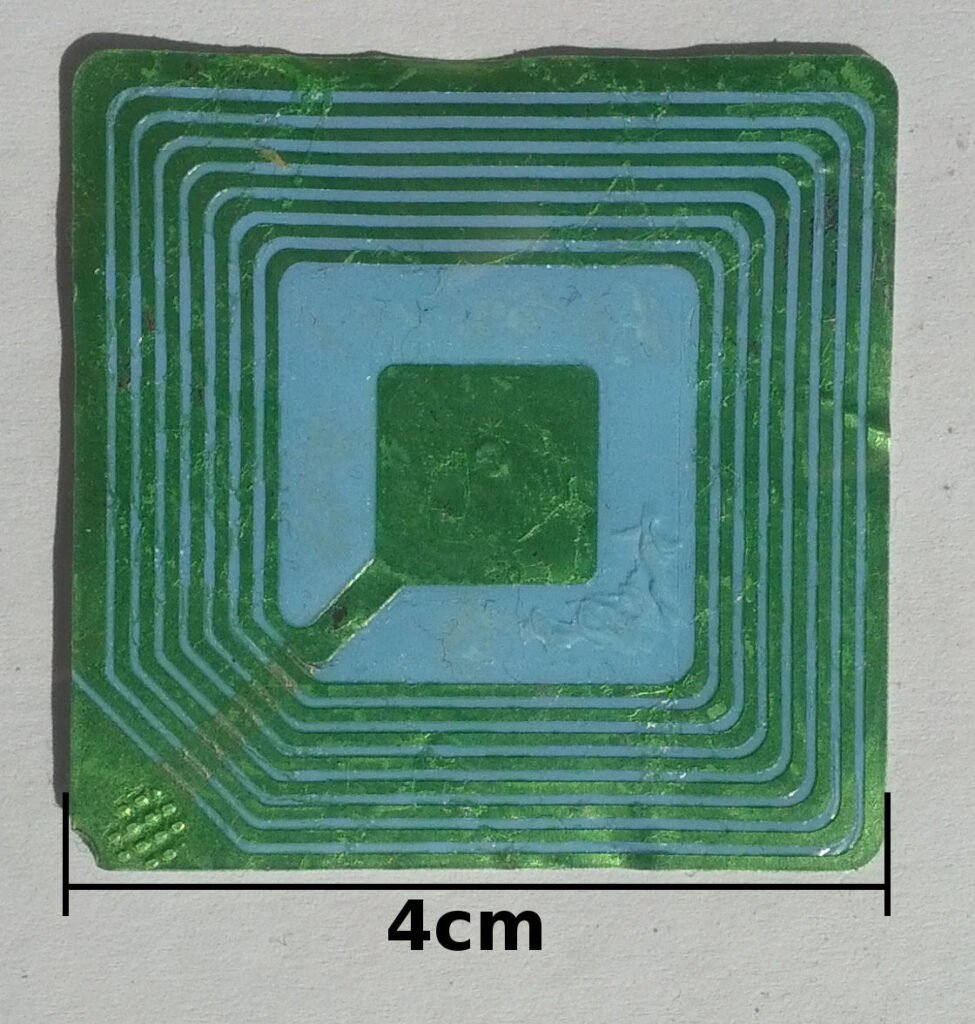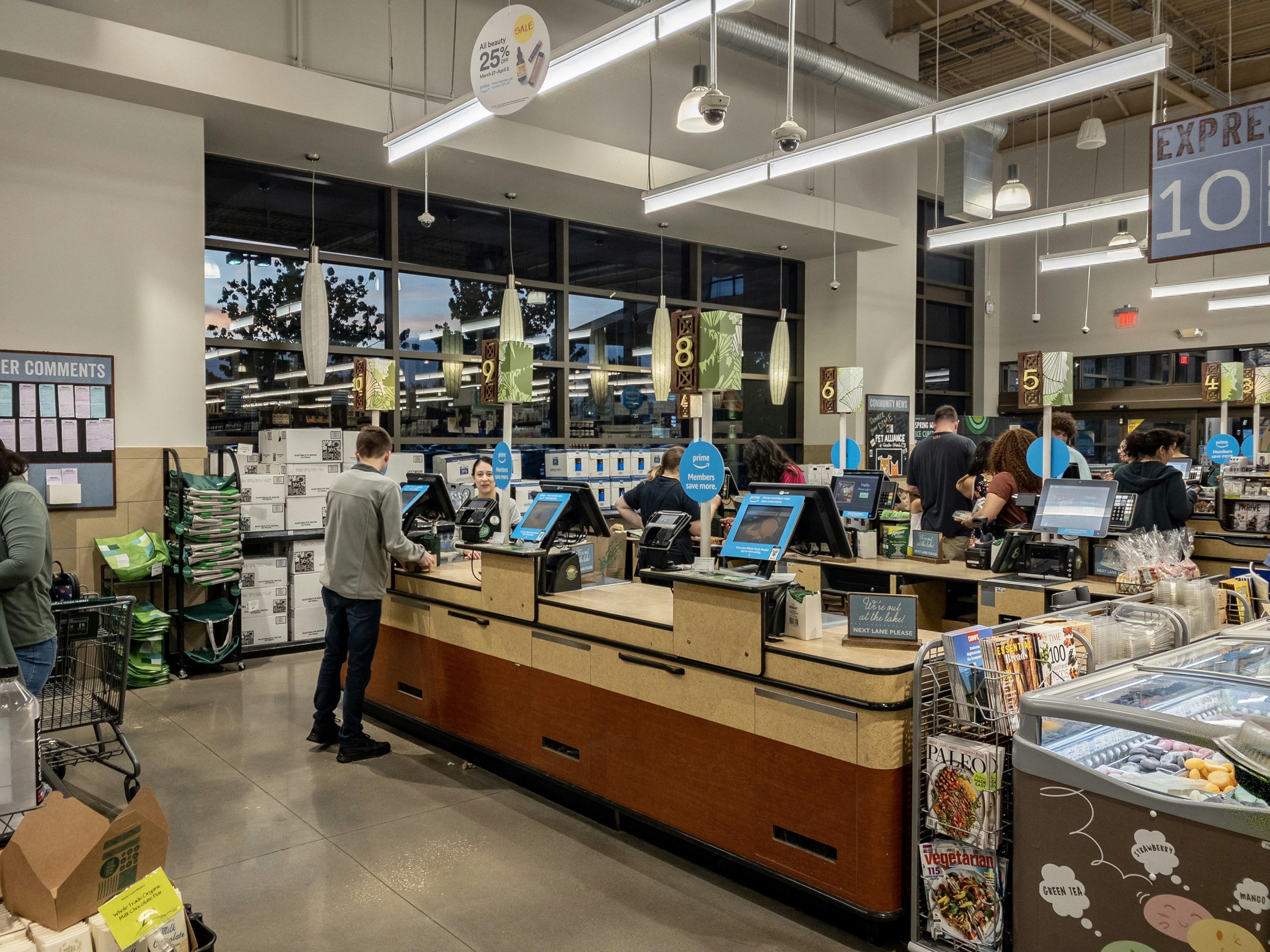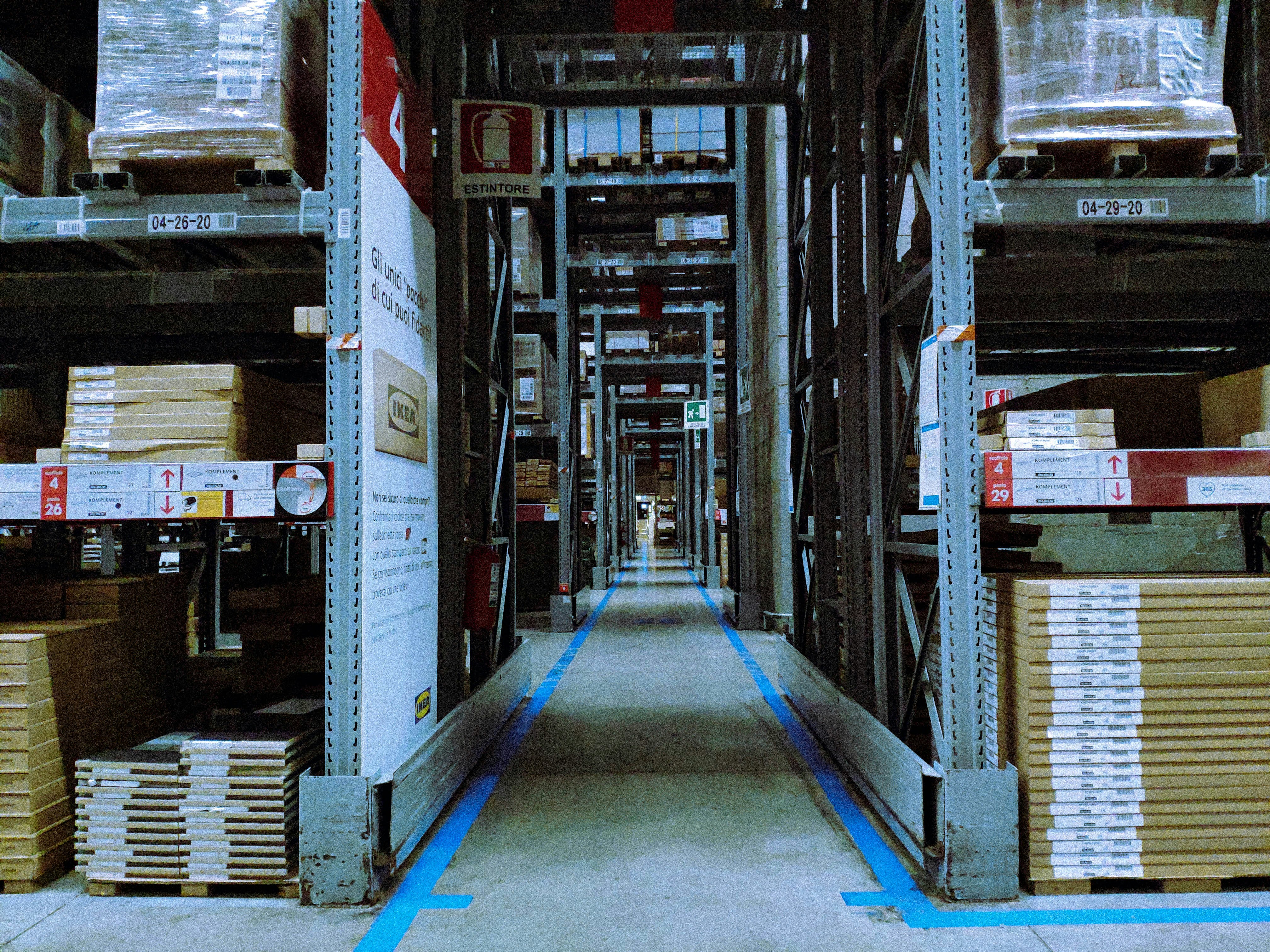Introduction to Smart Labels
Smart labels represent an innovative advancement in labeling technology, combining traditional labeling techniques with cutting-edge digital solutions. These labels serve as a pivotal element in the modern supply chain, enabling enhanced tracking and management systems across various industries. Smart labels typically incorporate a variety of technologies, including barcodes, RFID (Radio Frequency Identification), and NFC (Near Field Communication), seamlessly integrating into inventory management and logistics processes.
At their core, smart labels are designed to improve efficiency, accuracy, and visibility. By utilizing barcodes, businesses can automate data collection and reduce the potential for human error. This automation allows for swift access to information related to products, including their origin, expiration dates, and current location in the supply chain. Additionally, the integration of NFC technology further elevates smart labels by enabling contactless communication between the label and reading devices. This functionality facilitates instantaneous data exchange and enhances user engagement, introducing a new layer of interactivity for consumers.
The importance of smart labels extends across various sectors, including healthcare, retail, logistics, and manufacturing. In the healthcare industry, smart labels are instrumental in tracking medication and ensuring compliance with safety standards. Retailers utilize these labels to monitor inventory in real-time, improving stock accuracy and ultimately enhancing customer service. In manufacturing, smart labels contribute to quality control and traceability, safeguarding against product recalls and ensuring adherence to regulatory requirements.
As businesses strive to optimize their operations, the demand for smart labels continues to rise. These labels not only streamline processes but also foster greater transparency and accountability within supply chains. As technology evolves, smart labels are poised to play a crucial role in shaping the future of product tracking and management systems.
Understanding Barcodes and Their Applications
Barcodes are a widely adopted technology employed for automatic identification and data capture. They consist of a series of parallel lines or squares that encode information, which can be scanned and interpreted by a barcode reader. The primary types of barcodes include one-dimensional (1D) barcodes, such as UPC and EAN, and two-dimensional (2D) barcodes, such as QR codes. Each type serves different purposes and has unique advantages tailored for various applications in the business sector.
1D barcodes are particularly prevalent in retail environments. They store a limited amount of data, typically encoding product information such as price and manufacturer. This simplicity allows for quick scanning at checkout, facilitating streamlined operations. On the other hand, 2D barcodes can hold significantly larger amounts of data, making them suitable for more complex applications. For example, QR codes are often used in marketing campaigns, allowing consumers to access websites or offer details by scanning with their mobile devices.
The versatility of barcode technology has led to its extensive use in logistics and inventory management. In warehousing, barcodes enable efficient tracking of products through the supply chain. Each item can be scanned when it enters or leaves the facility, providing real-time updates to inventory levels. This process helps reduce human error and improves accuracy in stock management.
Despite their numerous advantages, barcodes also possess certain limitations. For instance, they require line-of-sight scanning, which can hinder efficiency in busy environments. Additionally, the need for dedicated barcode scanners can incur additional costs for businesses. Nevertheless, their efficacy in enhancing operational efficiency makes them a fundamental tool within various industries.
The collaboration of barcode technology with emerging technologies such as NFC promises a new horizon for enhancing smart labels, facilitating even greater efficiency and functionality.
An Overview of NFC Technology
Near Field Communication (NFC) technology is a subset of wireless communication protocols that allows two devices to exchange data when they are in close proximity, typically within a range of 4 centimeters. This technology operates on the principles of electromagnetic induction and is typically integrated into smartphones, tablets, and other smart devices. NFC enables swift interactions with minimal user intervention, making it an invaluable component of modern communication systems.
The mechanism behind NFC is relatively straightforward. It utilizes a polling system where one device, the initiator, sends out radio frequency signals that the target device can respond to. The interaction is then established once both devices are in close range. This communication process can occur in multiple modes: card emulation mode, reader mode, and peer-to-peer mode, each offering distinct functionalities ideal for various applications such as mobile payments, ticketing, and smart labeling.
NFC’s growing relevance is particularly evident in contactless transactions, where convenience and speed are paramount. It allows users to make secure payments in stores or to access restricted areas using just their mobile devices. Additionally, NFC enhances user experience in smart labeling by enabling seamless data transfer. For example, consumers can tap their smartphones on a smart label equipped with NFC to receive instant information about a product, including specifications, reviews, or promotional offers.
This user-centric approach enriches the interaction between consumers and products, leading to greater engagement and satisfaction. As NFC technology continues to evolve, its integration into smart labels is likely to become increasingly prevalent, paving the way for innovative applications across various industries.
The Benefits of Combining Barcodes and NFC
The integration of barcodes and Near Field Communication (NFC) technology in smart labels presents a multitude of benefits that revolutionize data management and enhance operational efficiency. By harnessing the strengths of both systems, businesses can significantly improve their data capabilities. Barcodes, known for their reliability and ease of scanning, provide quick access to product information, while NFC allows for a seamless, contactless data exchange. This combination can drastically reduce time spent on data retrieval, ensuring that information is available swiftly and accurately for decision-making.
One major advantage of integrating barcodes and NFC is improved efficiency in inventory management. With the ability to scan barcodes and tap NFC-enabled devices, inventory tracking becomes instantaneous. This dual approach not only enhances accuracy in stock monitoring but also minimizes human error associated with manual entry. For instance, retailers utilizing this combined technology have reported a substantial decrease in out-of-stock incidents and improved replenishment processes, ultimately enhancing customer satisfaction and loyalty.
Furthermore, the synergistic nature of barcodes and NFC enables a multifaceted approach to data collection. By embedding NFC tags in products alongside traditional barcodes, businesses can gather detailed information about product movement and consumer interaction. This has been particularly beneficial in industries such as healthcare and logistics, where accurate tracking is crucial. A case study involving a pharmaceutical company demonstrated how the integration of barcodes and NFC improved traceability during recalls and significantly reduced compliance-related costs. Through these advancements, companies are not only optimizing their operations but also positioning themselves for future growth amidst an increasingly digital marketplace.
Challenges of Integrating Barcode and NFC Technologies
The integration of barcode and NFC (Near Field Communication) technologies into smart labels presents several challenges that businesses must navigate to achieve optimal functionality. One significant hurdle lies in ensuring compatibility between existing systems and the new technology. Many organizations already utilize barcodes in their operations, and incorporating NFC may require updates to software and hardware. This can lead to compatibility issues, especially if the existing infrastructure is outdated or not designed to support new technologies.
Cost implications also play a crucial role in the integration process. Businesses must assess the financial investment required for developing and implementing combined barcode and NFC solutions. Implementing new technology may involve purchasing new equipment, software licenses, or even hiring external consultants for setup and training. These costs can deter smaller businesses from making the transition, leaving them reliant on traditional systems that may not be as efficient or adaptable in the long term.
Another challenge is the need for employee training to ensure effective utilization of barcode and NFC technologies. With advancements in technology often come complexities that employees must learn to navigate. Businesses must invest in robust training programs to familiarize staff with the functionalities of smart labels that integrate both barcode and NFC capabilities. Without proper training, the benefits of these technologies may not be fully realized, leading to operational inefficiencies.
In this landscape, organizations must carefully weigh the benefits of integrating barcode and NFC technologies against the potential challenges, including compatibility issues, cost considerations, and the need for employee education. Strategic planning and thorough research are imperative for successful implementation that aligns with business objectives, ensuring that the advantages offered by smart labels can be maximized.
Use Cases of Smart Labels with Barcode and NFC Integration
The integration of smart labels with barcode and NFC technology has revolutionized various industries by enhancing operational efficiency and improving customer engagement. In the logistics sector, for example, companies utilize smart labels to streamline their supply chain processes. By combining barcodes and NFC chips, logistics providers can track shipments in real-time, ensuring accurate inventory management and reducing the chances of lost or misplaced items. This dual-functionality enhances accuracy while allowing for quick scanning, which is crucial for time-sensitive deliveries.
In the retail industry, smart labels have transformed the shopping experience. By embedding NFC technology within product tags, retailers offer customers instant access to product information, promotions, and coupons. When consumers scan these labels with their smartphones, they can receive detailed descriptions, user reviews, or even videos demonstrating product usage. This direct interaction via barcode and NFC fosters customer engagement, enhances satisfaction, and ultimately drives sales. Moreover, inventory management becomes more efficient, as employees can simply scan labels to update stock levels without cumbersome manual counts.
The healthcare sector also benefits significantly from the incorporation of smart labels. Hospitals and clinics utilize smart labels on medications and equipment to ensure patient safety. By integrating barcodes with NFC technology, healthcare providers can track medications, verify dosages, and maintain an automated inventory system. This reduces the risk of errors and enhances compliance with regulatory requirements. Additionally, NFC-enabled labels can direct healthcare professionals to up-to-date patient data, optimizing treatment effectiveness and improving overall healthcare delivery.
These examples illustrate the diverse applications of smart labels with barcode and NFC integration across various sectors. By adopting these technologies, businesses can not only improve operational efficiency but also enhance user experiences, demonstrating the potential for innovation across industries.
Future Trends in Smart Label Technology
The evolution of smart label technology, particularly with the integration of barcode and NFC (Near Field Communication) technology, is poised to shape various industries in the coming years. As consumer preferences and technological capabilities evolve, we can anticipate significant advancements that will redefine how businesses utilize smart labels for tracking, inventory management, and consumer engagement. The introduction of more sophisticated, user-friendly interfaces will likely enhance the overall functionality of these labels, providing consumers and businesses with seamless access to critical information.
One notable trend is the increasing adoption of Internet of Things (IoT) technology, which facilitates real-time monitoring and data collection through smart labels. This connectivity enables businesses to track goods throughout the supply chain with unparalleled accuracy, resulting in improved operational efficiency. Furthermore, as environmental concerns gain prominence, the development of eco-friendly and sustainable smart label materials is becoming essential. Manufacturers are increasingly investing in biodegradable substrates and inks, paving the way for a greener alternative in label production.
Additionally, advancements in data analytics and artificial intelligence are expected to enhance the capabilities of smart labels. Companies will harness big data to glean valuable insights from the information collected via smart labels, allowing for more personalized consumer experiences. For example, retailers may utilize NFC technology to provide customers with customized promotions or product recommendations based on their previous purchases.
The convergence of augmented reality (AR) with smart labels is another emerging trend. As AR technology becomes more mainstream, businesses can leverage smart labels to offer consumers interactive experiences, bridging the gap between physical products and digital content. In conclusion, the future of smart label technology, driven by barcode and NFC integration, is bright, characterized by innovation and endless possibilities that promise to enhance operational efficiencies and improve customer interactions across various sectors.
Implementing Barcode and NFC Smart Labels in Your Business
Integrating smart labels equipped with barcode and NFC technology into your business operations can significantly enhance inventory management and customer engagement. To initiate this process, it is vital first to evaluate the compatibility of these technologies with your existing systems. Begin by assessing your current inventory management software and determine if it supports integration with barcode scanning and NFC functionality.
The next step involves selecting the appropriate hardware. Barcode scanners, for instance, come in various types, including handheld and fixed-position models. Consider factors such as scanning speed, durability, and connectivity options. For NFC technology, NFC-enabled smartphones or specialized devices are essential, as they will facilitate seamless communication between the smart labels and your systems.
Once the hardware is selected, the focus should shift to procuring smart labels that meet your business needs. Smart labels can be printed with unique barcodes and embedded with NFC chips. It is advisable to choose labels that are durable and can withstand environmental conditions relevant to your industry. Ensure that the labels are designed to be easily scannable and tapable to enable quick access to the information stored within them.
Following the procurement of technology and materials, proceed with an integration plan. This plan should include the configuration of your software to recognize and process the data from barcodes and NFC chips. Adequate training for the staff on usage and troubleshooting is crucial to ensure a smooth transition. During this phase, consider conducting pilot tests to identify potential challenges and gather feedback.
Finally, monitor the implementation regularly to assess the effectiveness of the smart labels. Collecting data on operational improvements, customer interactions, and overall efficiency will provide valuable insights for future enhancements. By following these structured steps, businesses can effectively implement barcode and NFC smart labels, ultimately leading to improved performance and customer satisfaction.
Conclusion and Key Takeaways
Throughout this blog post, we have explored the significant advancements in smart labels through the integration of barcode and Near Field Communication (NFC) technologies. The evolution of labels from simple identification tools to sophisticated, interactive elements illustrates the transformative power of these technologies in various industries. Barcodes have long provided a reliable means of tracking and managing inventory, while NFC offers an innovative approach to engage consumers and provide instant access to detailed product information.
The synergy between barcode and NFC technologies enhances the functionality of smart labels, offering numerous benefits including improved efficiency, greater accuracy in data collection, and enhanced user experience. This combination allows businesses to streamline their operations, reduce errors, and offer customers a more engaging interaction with their products. For instance, the integration enables quick scanning for inventory management through barcodes, coupled with the convenience of NFC for customer engagement, such as promotional offers or additional product details.
Moreover, as industries continue to evolve and adapt to consumer demands, harnessing the potential of smart labels equipped with both barcode and NFC indicates a forward-looking strategy for businesses. Organizations that embrace this integration stand a better chance of remaining competitive in a rapidly changing marketplace. Implementing these technologies not only fosters operational efficiencies but also enriches customer loyalty and satisfaction.
In conclusion, combining barcode and NFC technologies for smart labels is not just an option but a strategic necessity in today’s digital landscape. Companies are encouraged to adopt this integrated approach to optimize their processes and maintain relevance as the demand for enhanced consumer experiences increases. The future of labeling is undoubtedly smart, and the time to act is now.
© barcodly.com- All rights reserved





